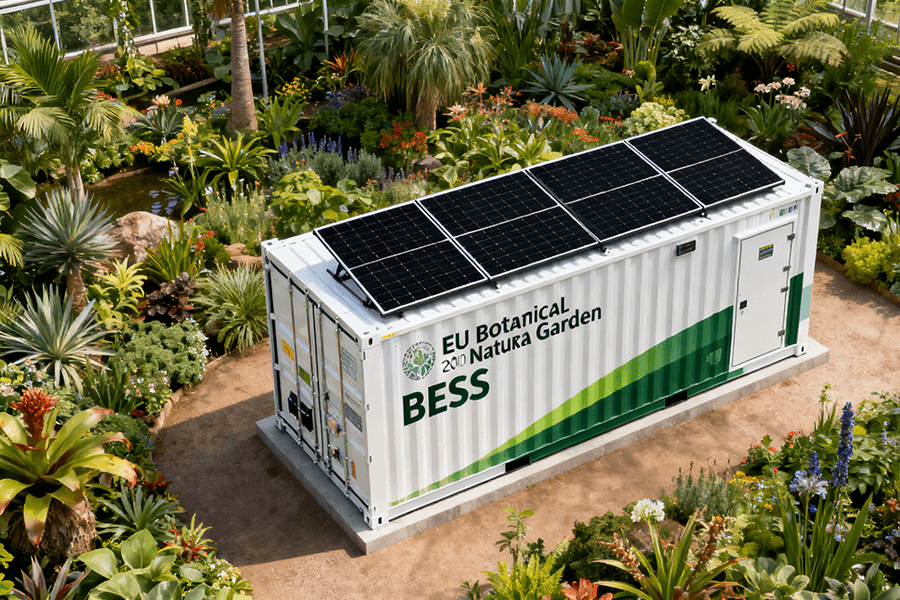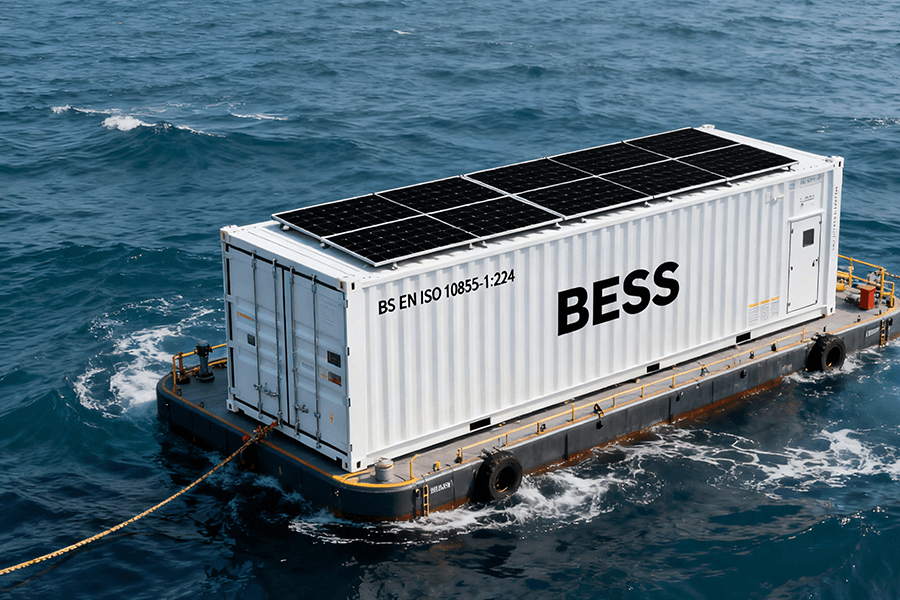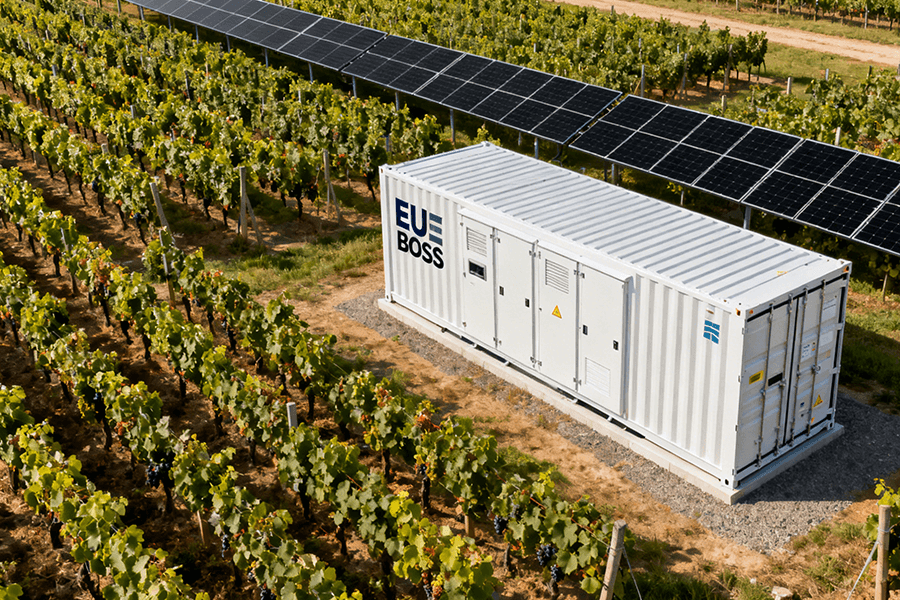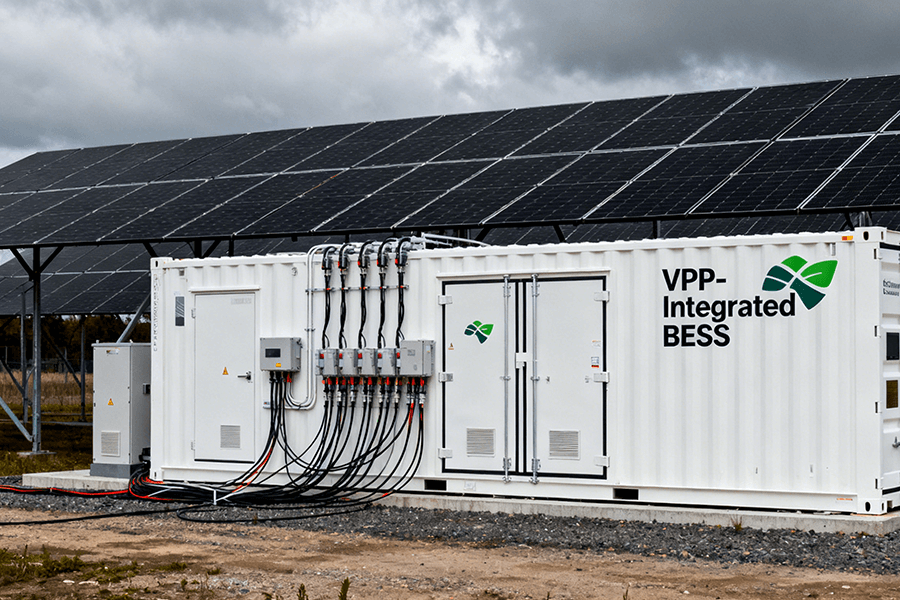Solar Panel
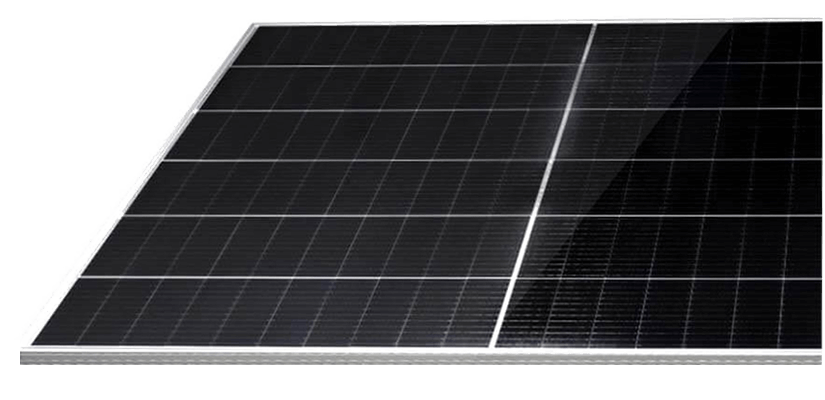
Today’s commercially available photovoltaic panels for commercial and industrial use are mainly monocrystalline solar panels. For special requirements and usage scenarios, we can also offer double-sided double-glazed and all-black photovoltaic panels. They are more efficient, have a very good quality and a 25-year warranty.
Today’s commercial and industrial photovoltaic panels are mainly high-power photovoltaic panels, which use 210mm cells and have a power of around 600W.
The choice of total PV panel power depends on the electricity consumption of your factory or shopping mall. If your electricity consumption is 320kWh, you will need a PV system with 100kWh/3.2h = 100kW. (3.2h is the assumed effective power generation time per day, which depends on the local light intensity. The better the light intensity is approximately, the longer the effective light time will be.)
Solar Inverter
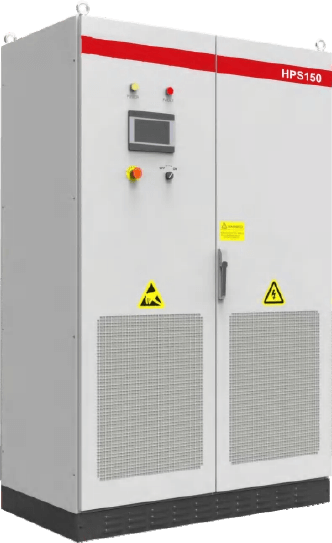
Commercial and industrial PV inverters are available in off-grid, grid-connected and hybrid types, as are residential PV inverters. If a factory or shopping mall, for example, relies solely on a PV system for its electricity generation, then an off-grid system with batteries is the way to go. If you need to sell electricity to reduce costs, you will need a grid-connected system. If you need both, you will need a hybrid system.
Commercial and industrial PV inverters are a bit more powerful, probably from 50kW upwards to several hundred or thousands of kW. you can see more of the previous complete solutions in our case studio.
The amount of power you choose depends on the sum of the total loads your plant is working with at the same time. You can refer to this formula: sum of resistive load power + sum of inductive load power X 3. However, too much power will increase the cost, and we can also reduce the starting voltage of inductive loads by using a reduced voltage start.
Solar Battery

The vast majority of commercial and industrial batteries are rack-mounted, high-voltage lithium batteries, which require a relatively large battery capacity because of the high power consumption. Lithium batteries are more stable and reliable.
We usually use standard battery packs of 10 kWh or 43 kWh in series and parallel to obtain the required voltage and capacity for the user.
This is related to factors such as the local weather and the amount of electricity needed at night. The more power required at night and the longer the rainy weather, the more energy storage is required. The amount of battery discharge per unit time also needs to be considered to ensure you can drive the load properly.
Control Box
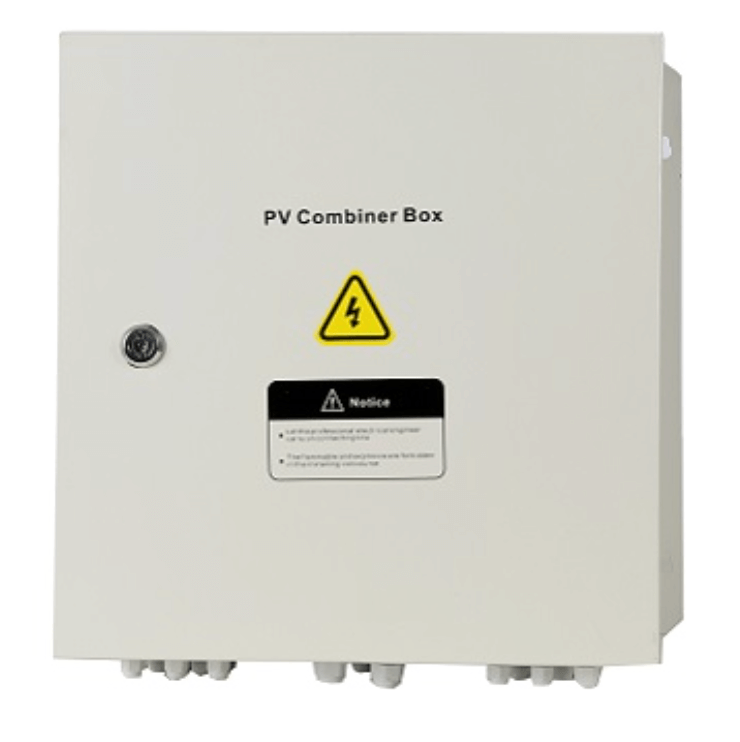
The control box is essential for commercial and industrial PV systems as more panels will be used. Often several control boxes are selected for a system to ensure better management of each PV panel.
Cable & Connecter
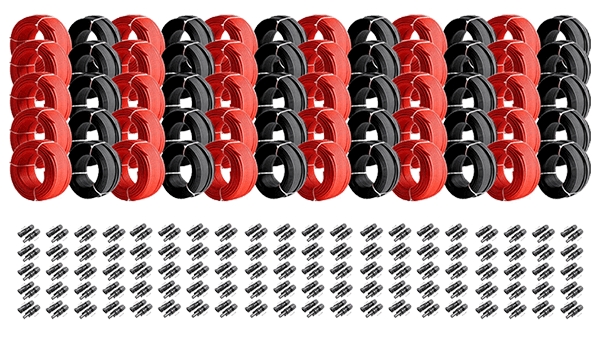
Our technical engineers will provide you with conventional cable runs and connectors depending on the size of your system, which will suit most needs. If there are special circumstances they can also be customised for you on a case by case basis.
Bracket
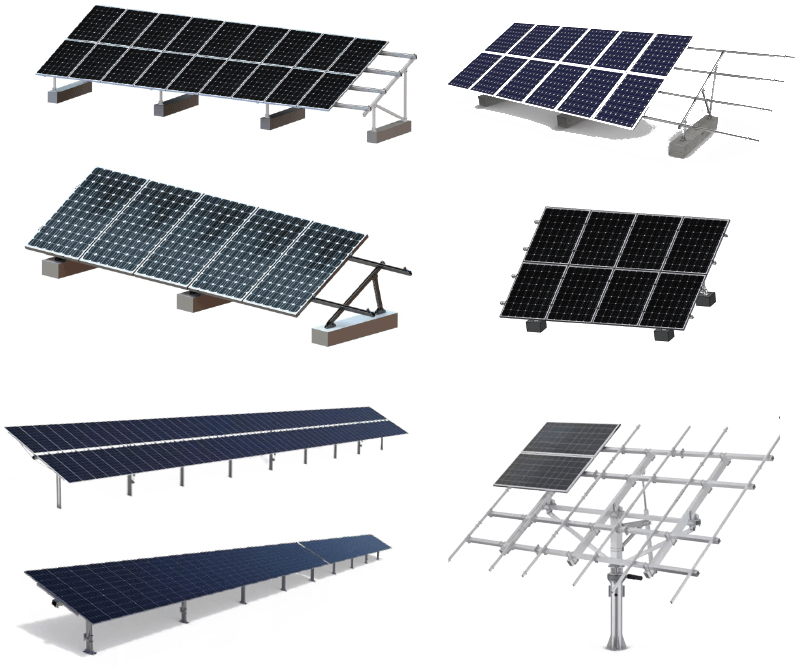
Commercial and industrial PV systems are available as rooftop PV systems and ground-mounted PV systems. They can be installed on the roof of a factory or on open ground. We have solutions for different roof and ground conditions.
Products included in the system
The following components are commonly included in C&I photovoltaic systems,
but you can also contact our sales experts for other related products.
Solar Panel

Today’s commercially available photovoltaic panels for commercial and industrial use are mainly monocrystalline solar panels. For special requirements and usage scenarios, we can also offer double-sided double-glazed and all-black photovoltaic panels. They are more efficient, have a very good quality and a 25-year warranty.
Today’s commercial and industrial photovoltaic panels are mainly high-power photovoltaic panels, which use 210mm cells and have a power of around 600W.
The choice of total PV panel power depends on the electricity consumption of your factory or shopping mall. If your electricity consumption is 320kWh, you will need a PV system with 100kWh/3.2h = 100kW. (3.2h is the assumed effective power generation time per day, which depends on the local light intensity. The better the light intensity is approximately, the longer the effective light time will be.)
Solar Inverter

Commercial and industrial PV inverters are available in off-grid, grid-connected and hybrid types, as are residential PV inverters. If a factory or shopping mall, for example, relies solely on a PV system for its electricity generation, then an off-grid system with batteries is the way to go. If you need to sell electricity to reduce costs, you will need a grid-connected system. If you need both, you will need a hybrid system.
The amount of power you choose depends on the sum of the total loads your plant is working with at the same time. You can refer to this formula: sum of resistive load power + sum of inductive load power X 3. However, too much power will increase the cost, and we can also reduce the starting voltage of inductive loads by using a reduced voltage start.
Solar Battery

The vast majority of commercial and industrial batteries are rack-mounted, high-voltage lithium batteries, which require a relatively large battery capacity because of the high power consumption. Lithium batteries are more stable and reliable.
We usually use standard battery packs of 10 kWh or 43 kWh in series and parallel to obtain the required voltage and capacity for the user.
Control Box

The control box is essential for commercial and industrial PV systems as more panels will be used. Often several control boxes are selected for a system to ensure better management of each PV panel.
Cable & Connecter

Our technical engineers will provide you with conventional cable runs and connectors depending on the size of your system, which will suit most needs. If there are special circumstances they can also be customised for you on a case by case basis.
Bracket

Commercial and industrial PV systems are available as rooftop PV systems and ground-mounted PV systems. They can be installed on the roof of a factory or on open ground. We have solutions for different roof and ground conditions.
Related Solutions
Related Blogs
EU Botanical Garden BESS Container: Quiet, Reliable Power for Biodiversity & Natura 2000 Compliance
行政2025-11-24T17:03:08+08:00November 24th, 2025|Categories: Design, News|
Offshore Compliant BESS Container Europe: Meet BS EN ISO 10855-1:2024 for Rugged Marine Energy Storage
行政2025-11-24T17:02:24+08:00November 24th, 2025|Categories: Design, News|
Let’s Make Things Happen
Add notice about your Privacy Policy here.
Let’s Make Things Happen
”The Maxbo team of sales consultants will continue to enrich our own expertise and experience to empower the development of sustainable energy with rigor.“
Maxbo CEO
You will need to provide: 1. the amount of electricity used. 2. the type and power of the load. 3. the electricity consumption habits (daytime/nighttime consumption). 4. the need to store electricity. 5. the need to feed electricity to the mains. 6. drawings or address of the installation site. 7. other special requirements
We can provide you with a quotation, a specification for all products, a circuit connection diagram and a diagram of the installation and placement of the PV panels. Any other requirements and adjustments needed can be discussed with our team.
We can meet the needs of most scenarios, whether your application is for domestic, commercial and industrial use, in remote areas, or for grid-level energy storage, we have experienced colleagues to design and deliver the right solution.
Add notice about your Privacy Policy here.
How much solar power do I need?
Most homes need 5–12kW, depending on your energy use and location.
Off-grid vs. grid-tied — what’s the difference?
Off-grid works without the utility grid; grid-tied lets you sell extra power back.
Do I need permits?
Usually yes — check local rules or ask us for guidance.
How long does a battery last?
Depends on size and load. A 5kWh battery can power a fridge for about 40 hours.
Can I upgrade my system later?
Yes, our systems are modular and easy to expand.
Does Maxbo offer installation?
We ship globally and connect customers with trusted local installers.

